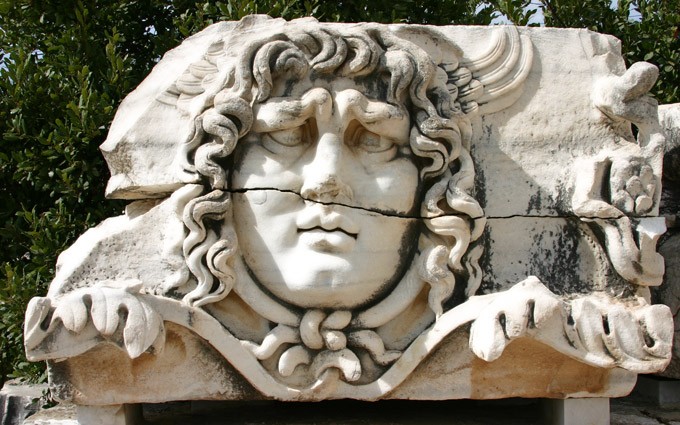 Didyma (Didim) an hour drive from the city of Aydin, is one of the Turkey’s prime holiday destinations. It has a rich cultural heritage, golden beaches, and a coast of intricate coves, each a wonder of nature. The Temple of Apollo in Didyma is one of the largest and best-preserved temples of the ancient world. There are few better beaches on the Aegean coast than the beautiful Altinkum, and it’s easy to hop on a boat trip to one of the picturesque coves to enjoy a swim. Fascinating ancient cities and gorgeous natural wonders await you. Didyma is not a run of the mill summer resort; the tourist attractions are only the start. The vibrant life of the Didyma continues well after the summer season closes down. Large communities of ex-pat Europeans, especially the British, have settled in Didyma, and consequently with its shopping centers, markets and supermarkets Didyma is full of bustling international activities.
Didyma (Didim) an hour drive from the city of Aydin, is one of the Turkey’s prime holiday destinations. It has a rich cultural heritage, golden beaches, and a coast of intricate coves, each a wonder of nature. The Temple of Apollo in Didyma is one of the largest and best-preserved temples of the ancient world. There are few better beaches on the Aegean coast than the beautiful Altinkum, and it’s easy to hop on a boat trip to one of the picturesque coves to enjoy a swim. Fascinating ancient cities and gorgeous natural wonders await you. Didyma is not a run of the mill summer resort; the tourist attractions are only the start. The vibrant life of the Didyma continues well after the summer season closes down. Large communities of ex-pat Europeans, especially the British, have settled in Didyma, and consequently with its shopping centers, markets and supermarkets Didyma is full of bustling international activities.
TEMPLE OF APOLLO
Didyma was home to one of the most famous oracles of antiquity. The sanctuary was part of the illustrious city of Milet (Miletus in antiquity) . Visitors anxious for a vision of the future flocked to the “Sanctuary of Oracles “The Temple of Apollo, built to honor Apollo, the god of sun, arts, music, and prophecy, became one of the most respected sanctuaries of the ancient world, where visitors eagerly listened to cryptic omens of the future passed down by the oracles. The founding legend of the Temple of Apollo concerns the shepherd Branchos, who learned the secrets of prophecy from the god himself. The temple was originally built in the 8th century BC, and the sanctuary was administered by the Brahchidae, who claimed descent from the legendary Branchos. Over time the oracles became famous for the accuracy of their predictions,visitors in faraway countries who consulted the oracle on matters of state and plans for war. The Persians demolished the temple in 494 BC. to punish the rebellious Ionians. Following the arrival of Alexander the Great, who stopped in Didim during his quest to conquer the world and defeated the Persians, the temple was rebuilt in a more grandiose fashion. Construction began in 300 BC on the orders of Seleucus, one of the Alexander’s commanders, and lasted for many years. The rebuilt temple was even larger than the original and complemented by diverse ancillary structures. When Christianity started to spread in Anatolia the reconstruction was abandoned and unfinished. The temple was no use to monotheism, and when the local population adopted Christianity, oracles and fortune tellers were banned and severe punishments were promulgated against those involved in these activities. The new religion banned the oracles from their traditional activities in the sanctuary. Earthquakes chipped away at the structure including a devastating 14th century tremor. However, the present day ruins give a strong impression of the temple’s original grandeur. Today only a few columns stand upright, but the renowned Temple of Apollo was once the third largest sanctuary of the ancient world. The original structure had 124 columns in double file, and the roof was almost 20 meters high. In many aspects, including its original layout, The temple of Apollo was different from the other temples of the ancient world. The decorations and upright columns that have stood the test of time indicate the meticulous splendor of the temple’s design and execution. ,In ancient times, visitors to the temple arrived by sea at Panormos Harbour, which was situated near the present day Mavisehir, and followed the sacred way up to the Temple. Both sides of the this way were lined with statues, many of which were removed in 19th century. Today the statues are on permanent display at the British Museum. However a few of the statues have remained in site and can be seen here today. Along with the temple itself, visitors can see the petrifying Medusa Head, which has become a symbol of Didyma.
